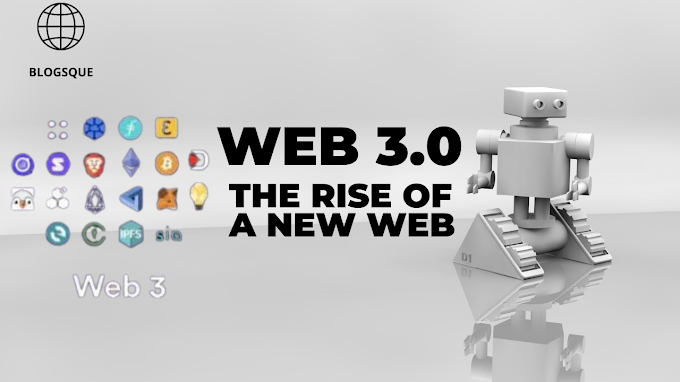
What
is Web 3.0?
Web 3.0 is the next generation of
the World Wide Web, where the focus is on creating a more interactive and
personalized experience for users. This means that instead of just passively
consuming content, users will be able to contribute their own data and
creativity to create a more dynamic web. Web 3.0 will also make use of new
technologies such as artificial intelligence and virtual reality to create even
more immersive experiences.
The term "Web 3.0" was first coined by John Markoff in 2006, and the
concept has been gaining traction ever since. While there is no official definition
of Web 3.0, it is generally seen as the next logical step in the evolution of
the web.
The
Different Types of Web 3.0
Web 3.0 is the next evolution of the
internet, where users will be able to interact with web applications and data
in a more natural and intuitive way.
There are many different types of Web 3.0 applications being developed, each
with its own unique set of features and capabilities.
Some of the more popular
types of Web 3.0 applications include:
1. Social networking sites: These are websites that allow users to connect with
friends and family, share photos and updates, and stay up-to-date on what’s
happening in their social circles.
2. Collaborative online platforms: These are websites that allow users to work
together on projects, share files and ideas, and generally collaborate online.
3. Virtual worlds: These are online environments that allow users to explore,
interact with others, and even create their own content.
4. Augmented reality applications: These are applications that overlay digital
information on the real world, allowing users to get real-time information
about their surroundings.
5. Location-based services: These are services that use GPS or other
location-tracking technology to provide users with information about their
current location, such as nearby businesses or attractions.
6. Mobile applications: These are applications that are designed to be used on
mobile devices, such as smartphones and tablets.
7. Voice-activated assistants: These are software applications that allow users
to interact with a digital assistant using their voice instead of a keyboard or
mouse.
Pros
and Cons of Web 3.0
Web 3.0, commonly referred to as the
Semantic Web, is the third iteration of the World Wide Web. It is a vision of
an intelligent web that understands the user’s needs, context, and preferences,
and then proactively delivers the most relevant content and services.
There are many potential benefits of Web 3.0, such as improved search results,
more personalized content, and better integration with artificial intelligence
(AI) and the Internet of Things (IoT). However, there are also some potential
drawbacks to consider, such as privacy concerns and the potential for increased
surveillance.
Pros and drawbacks of Web 3.0 are listed below:
Pros:
1. Improved search results: Web 3.0 has the potential to improve search results
by understanding the user’s needs, context, and preferences. This could lead to
more relevant and targeted search results.
2. More personalized content: Web 3.0 could also deliver more personalized content
to users. This could include content that is tailored to the user’s interests,
location, and other factors.
3. Better integration with AI and the IoT: Web 3.0 has the potential to better
integrate with AI and the IoT. This could lead to more intelligent and
responsive websites and apps.
4. Increased transparency: Web 3.0 could increase transparency by providing
more data about the sources of information and the methods used to collect it.
5. Greater security: Web 3.0 could also provide greater security by
authenticating users and encrypting data.
Cons:
1. Privacy concerns: One of the main concerns about Web 3.0 is that it could
violate users’ privacy rights by collecting personal data without consent.
2. Increased surveillance: Another concern is that Web 3.0 could enable
increased surveillance of users by government agencies and corporations.
3. Centralization of power: Some critics worry that Web 3.0 could lead to the
centralization of power among a few large companies that control the data.
4. Lack of standards: There are currently no standards for Web 3.0, which could
lead to compatibility issues and confusion.
5. Implementation challenges: There are also many technical challenges
associated with implementing Web 3.0, such as developing the necessary
infrastructure and training AI systems.
Overall, Web 3.0 has the potential to be a very powerful tool that can
revolutionize the way we interact with the internet. However, it is important
to weigh both the pros and cons before implementing this new technology.
What
is the Future of Web 3.0?
The future of Web 3.0 is very
exciting. It is the next stage in the evolution of the internet and promises to
change the way we interact with the web forever.
Web 3.0 is all about connecting people and devices to the internet in a more
seamless and efficient way. It will make it easier for us to access information
and communicate with each other.
The most exciting thing about Web 3.0 is that it will allow us to do things
that were not possible before, such as creating virtual reality experiences or
understanding the behavior of large groups of people.
What Web 3.0 is capable of, we are just just beginning to scrape the surface
of. The possibilities are endless and we can't wait to see what the future
holds for this new era of the internet.
Conclusion
We are on the cusp of a new era in web development, one that promises to be more user-centric and privacy-focused. With the rise of Web 3.0, we can expect to see more decentralized applications and services that give users more control over their data. This new wave of development is only just beginning, but it has the potential to revolutionize the way we interact with the internet.



.png)





informative article
ReplyDeleteInformative
ReplyDeleteAmazing
ReplyDelete